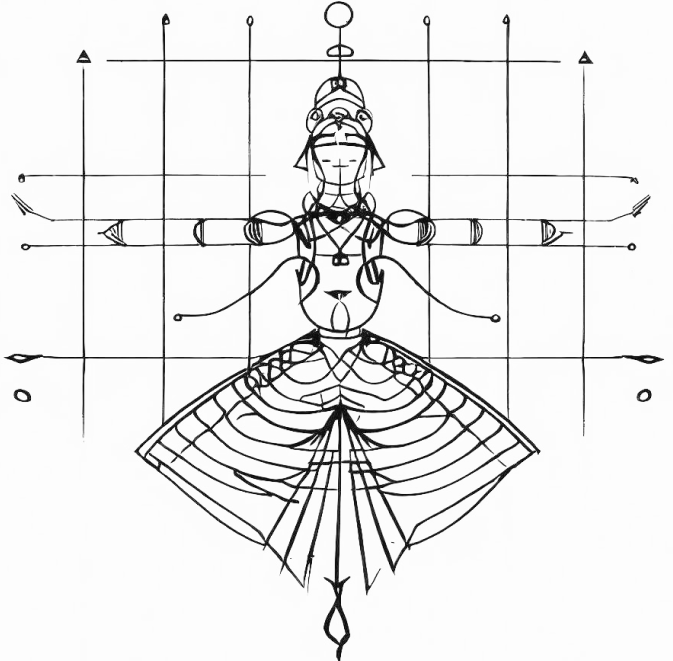Dance & Symmetry
The classical Indian dance form “Bharatanatyam” is one of the oldest dances in India. The dance is highly codified and schematised and is based on a series of geometric patterns that create symmetry and balance in the movements.
This is going to be the first in a series of stories where I try to connect the dots between the physical experience of dance and its connection to who I am (becoming).
Aramandi
One of the foundational positions of the dance is the Aramandi. One needs to place the feet together and then bend the knees outwards while keeping the upper body straight. The position is used to be grounded. My teacher often says that one needs to imagine an invisible string pulling one from the top of the head and then running down the back. When done correctly, the body can be circumscribed into a square (similar to Da Vinci’s Vitruvian Man).
Natyarambha
Just like the Aramandi, this is one of the foundational positions in the dance. It is achieved by elevating your arms (in an almost “T” position) and letting the wrists rest on an imaginary tabletop. Through practice one is able to engage one’s elbows and not allow the shoulders to take over. The posture of Natyarambha is beautifully symmetrical when combined with the Aramandi. The viewer would, as my teacher likes to say, recognise and appreciate the geometry of the invisible lines in the dancer’s body.
“Dancers design space with movement”
Dance & design
The understanding of symmetry is bodily and that is part of the human experience. By forming beautiful, geometric shapes we are not only transmitting ideas and messages but are directly participating in nature’s expression of beauty.
Design is a similar phenomenon. One can “feel” good design intuitively. It is with the same bodily knowledge that our eyes are able to appreciate the dancer’s grace and poise as well as a well laid out poster or a beautifully designed app.
Through practicing Bharatanatyam, I learnt about my body’s mechanics, about proprioception, and about intentionality. These concepts can be distilled into the practice of design — the way a product feels when one uses it (usability as well as interface design), the context of a product to its environment, and about what purpose it is trying to solve.
Symmetry is an integral part of both design and Bharatanatyam. A designer can use a dancer’s postures to map out shapes and get inspired by abstracting the movements into design interactions. The possibilities are endless!

